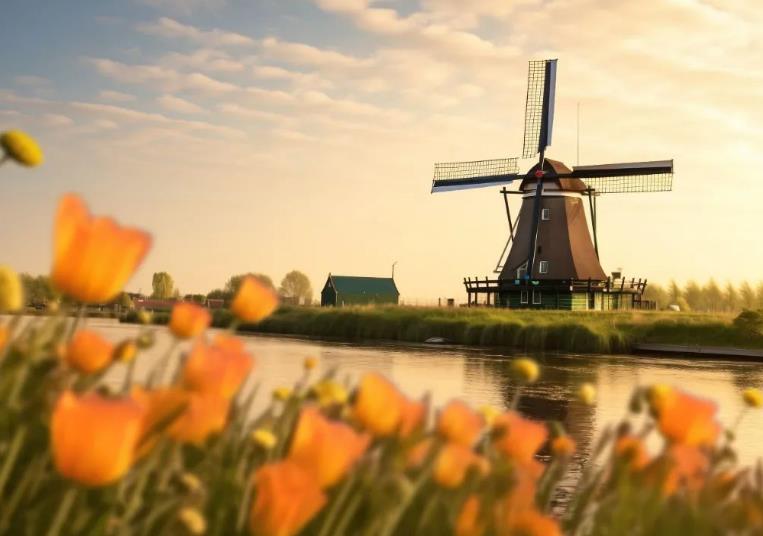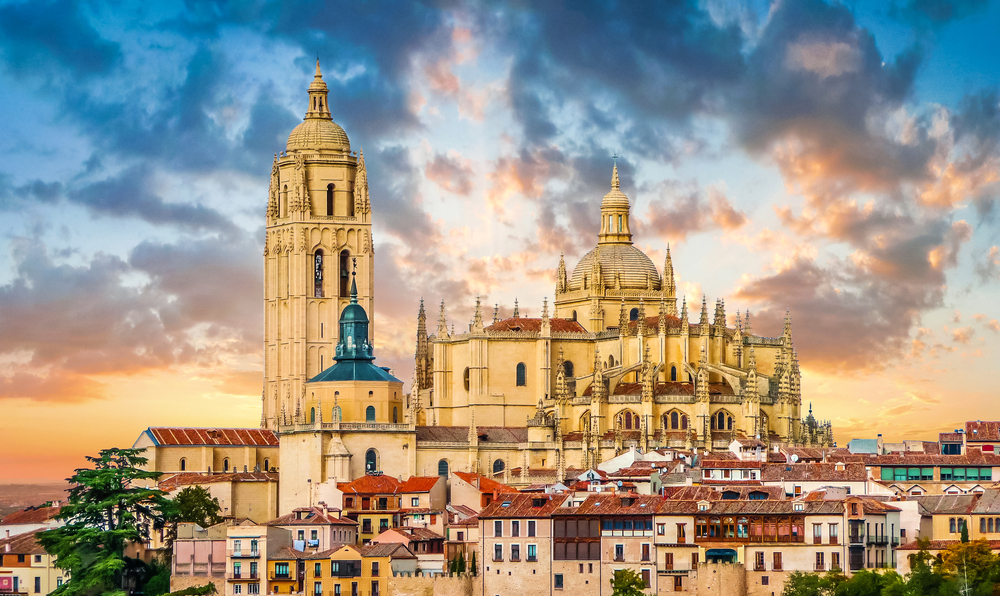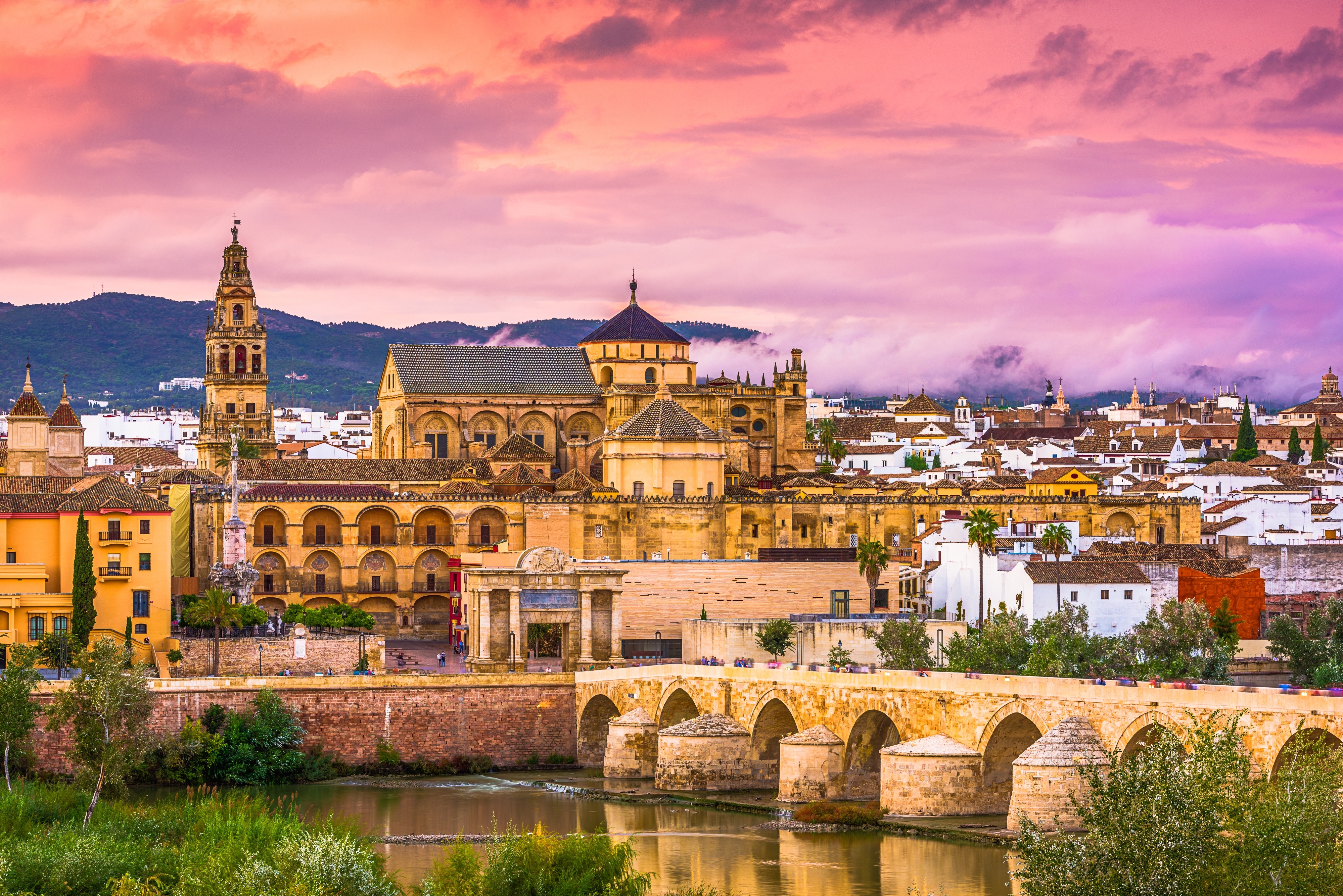https://id.trip.com/moments/destination-toledo-1668130/
2025 Toledo Travel Guide: Must-see attractions, popular food, hotels, transportation routes (updated in April)
Toledo Today's Weather
Partly clear 6-18℃
Popular Toledo in Attraction
Old Town
(53)Cathedral of Toledo
(36)The Alcázar
(25)Mirador del Valle
(14)San Martin's Bridge
(4)Monasterio de San Juan de los Reyes
(4)Puerta de Bisagra
(2)All Moments About Toledo
Probably t
Probably the best place the see almost all the town or #toledo is the road just 1km southern of the center. Toledo is the old capital of the kingdom of #spain and it is located on a short drive from the nowadays capital - Madrid. It is an #ancient town and is really authentical and beautiful place that everyone who goes to the area should visit. I really enjoyed my walk around the town, but the best experience for me was this view in just 1km away. #happynewyearStoyan Gotsev4Toledo in Spain🇪🇸
It takes about 40 minutes by train from Madrid to Toledo! If you're sightseeing in Madrid, be sure to stop by☺️ Unfortunately, it was a light rain that day, but the scenery was picturesque✨ There's a saying that goes, "If you only have one day in Spain, don't hesitate to go to Toledo." It's also a city that would not have developed without any of the three religions that caused the Renaissance in the 12th century! "Judaism" "Islam" "Christianity" You can still see traces of these religions when you look around the city✨ 📍Zocodover Square 📍Toledo Cathedral 📍Santome Church 📍Alcántara Bridge 📍Toledo Observatoryヨーロッパ在住/ARISAToledo, Spain
Hi Toledo is an hour travel tine from Madrid by bus. If you dont have a private car or maybe travelling alone. It is way better if you booked your trip there thru travel agency or tours. As this will give you easier access to Toledo. This ancient City is a must visit as every corner of the city has its own magnificent stories to tell. #toledocathedralChesterBryan1Two best viewpoints to overlook the ENTIRE Toledo
#celebrateit Toledo is a beast we all know. It’s located on top of a mountain surrounded by a river, which almost guarantees a unique and stunning view, if we go around it and view from outside. And Mirador del Tajo and Mirador del Valle are two of the most ideal spots. And the views are spectacular both before and after sunset. But do bear in mind that there are only bridges on the east and west side. Which means you have to make plans so that you’re near either bridge around the evening. Coz it would take around 40 min from the bridge to Mirador del Valle. This was the mistake I made so I didn’t make it before dark.Shih Yuin Chew1Dreaming back to the Middle Ages: Exploring the castles of Castile-La Mancha II.
Dreaming back to the Middle Ages, part two, exploring the legendary castles of Toledo and Ciudad Real. Toledo Guadamur Castle The Alcazar, a typical 15th-century residence of Toledo, is magnificent and well-preserved. It consists of a castle, fortresses, barriers and moats. Today, the castle is still inhabited and we can stroll around its exterior to admire the aesthetic effects of its architecture influenced by Italian art. After restoration, it has become one of the best preserved medieval castles in Spain. Consuegra Castle This 800-year-old castle is unique not only for its location overlooking La Mancha and its mills, but also for its rich history and architectural style, closely linked to the Order of St. John of Jerusalem (Orden de San Juan de Jerusalén). We can stroll along the city walls and parade grounds, and even go inside to see the various weapons and furniture on display to recreate the atmosphere of the time. Oropesa Castle The castle consists of two parts: one is the old castle, a well-preserved Arab fortress, and the other is the 15th-century Palace of Counts of Oropesa, Álvarez de Toledo, condes de Oropesa, which has a stone staircase that is unique in Spain. The history of these buildings therefore belongs to two consecutive periods of the Middle Ages, the Muslim period (Old Castle) and the Christian period (New Castle). Ciudad Real Calatrava La Nueva Castle A medieval castle, we can walk along the castle's paths, courtyards, towers, etc. In addition, the 13th-century convent still retains a gate with a rose window, a chapel, a refectory and kitchen, and a cemetery. The artisans' auxiliary quarters, accommodation, stables and cellars complete this magnificent picture of medieval life. Peñarroya Castle It is one of the best preserved fortresses in the Campo de San Juan area once occupied by the Knights of La Mancha. What is very interesting about the castle is how it uses natural fortifications: the south and west sides are natural cliffs, while the north and east sides have double walls and moats. Montizón Castle A 13th century fortress built to control an important traffic route. In Roman times, this was part of the Way of Hercules or the Via Hercúlea o Augusta, which connected Cádiz to Tarraconense and eventually to Rome itself, and the builders of the castle took advantage of the natural vertical faults in the hill.RICKY PATTONSaffron Festival: A Romantic Journey to Castilla-La Mancha.
Since 1963, the last weekend of October has been the most exciting time of the year for Consuegra. This small town on the plains of La Mancha is brought to life by the small saffron flowers. 90% of the world's saffron is produced in Castilla-La Mancha, and the saffron here is known as the best in the world. The Saffron Festival (Fiesta de la Rosa del Azafrán) is a traditional festival with a history of over 60 years. The manual picking of saffron, the daily blooming of flowers, and the drying of saffron have created the unique cuisine, history, and traditional culture of this land. In the morning, the sun shines on the fields, and the purple flowers sway gently in the breeze. Locals call them "roses," but in fact, these beautiful flowers are saffron buds. Picking saffron is a delicate manual task, and this skill is usually passed down from generation to generation. During the festival, you can go into the fields and experience the sense of accomplishment of picking saffron flowers with your fingers. After the work in the fields is done, the villagers return home with baskets full of flowers and "peel" them at the table. This process seems simple, but it requires great patience and skill - extracting the tiny red filaments from each flower, which is the most precious part of saffron. The "flower peeling competition" during the festival is even more eye-catching, with skilled contestants peeling a whole pile of filaments in just a few minutes, which is amazing. Of course, the festival is more than just that. Walking through the streets of the town, you can see performers in traditional costumes everywhere, welcoming visitors from afar with the music and dance of La Mancha. There is also the old windmill "Sancho," which silently tells the history of this land with the sound of the wind. The mill inside the windmill is still working, and visitors can witness how the wheat grains are ground into fine flour, as if they were back in the past. The Saffron Festival is also a feast for the taste buds. The local cuisine and wine from La Mancha are full of local flavor. Saffron, as an important seasoning, gives the dishes a bright color and unique aroma, as if the soul of this land is infused into every delicious dish. Did you go to the Saffron Festival this year? If not, save it for next year! Pick a flower, take a touch of red, and feel the vitality of this land. The saffron here is not only a delicacy for the taste buds, but also a gift for the soul.Wandering Taste Buds1Toledo, the beautiful medieval city and capital of ancient Spain
Address: 45006 Toledo, Toledo Spain Atmosphere/Facilities: Toledo, a city near Madrid, is interesting just to look at the buildings with mixed Christian and Islamic styles from the hilltop. All the scenery that unfolds before your eyes is beautiful Key Point: They say that both sunrise and sunset are beautiful. It's worth it. If you're tired, there's a mini train that runs, so I recommend using it. #NovemberTravelSupportEvent #ToledoTravel #SpainTravelDodubongToledo is
Toledo is an ancient city located in central Spain, a beautiful city with a strong medieval atmosphere. It is also known as the "City of Three Cultures" where the three cultures of Arab, Jewish, and Christian coexist, and is dotted with many historical buildings. Its attractions include the Alcazar, Toledo Cathedral, and the El Greco Museum, where you can feel the strong influence of art and religion. Walking through the narrow cobblestone streets will make you feel as if you have traveled back in time. In addition, the view of the Tagus River surrounding the old town is spectacular, and you can get a panoramic view of the whole of Toledo. #Toledo #SpainTrip #CityOfThreeCultures #ToledoCathedral #Alcazar #ElGrecoMuseum #MedievalStreetScenery #HistoricalStreetScenery #TajoRiver #ScenicSpots #AncientCityToledo #SpainTourism #CobblestoneStreet #UNESCOWorldHeritage #SpanishCultureタクト兵長1The city of 3 cultures!
#traveldiaries Christians, Muslims and Jews. Followers of the three religions lived side by side for centuries and left their mark in Toledo. It is one of Spain’s most interesting and intriguing cities, where you can see a Gothic cathedral, a 10th century mosque and two synagogues in the space of just a few metres. It was once an Imperial City, and its beauty was depicted in the paintings of El Greco. Visitors to the city should be sure to see its views, visit the Alcázar, walk around its winding streets, or see a sunset from the Alcántara or San Martín bridges. Less than 80 kilometres from Madrid, it’s worth spending more than a day to see the city lit up at night and explore it in more depth. Must visit attractions: 📍El Alcazar Perched on one of the highest points in Toledo, El Alcazar overlooks the city. 📍Mezquita Cristo de la Luz Toledo’s old mosque. 📍Plaza Zocodover A large open plaza that connects many of the main sites in Toledo. 📍Catedral Primada Main cathedral of Toledo. 📍Monasterio de San Juan de Los Reyes Monastery in the heart of Toledo’s Jewish Quarter. 📍The El Greco Museum Dedicated to late renaissance art painted by the famous El Greco. 📍Puente de Alcantata Toledo’s most beautiful bridge. Crossing the Tajo river, the old Roman bridge used to be the only entry to the city for pilgrims.littledaizy2The view of Toledo is here!
#August Travel Support Event Piedra del Rey Moro, visited during a trip to Toledo, Spain. It was a place where you could see the Toledo area at a glance, but there was no separate building, only iron handrails installed next to the rocks. There are no other safety devices, so you should be careful while viewing. It was very nice to be able to enjoy the magnificent view of the old city of Toledo.민트빛레몬Spain 🇪🇸
Toledo, Spain 🇪🇸 The place where I took this photo in the Toledo region of Spain is called Piedra del Rey Moro! This is a spot where you can look down on the city of Toledo, and it's one of my top three recommended spots! By the way, I was sitting in the bottom right corner, so I could see Toledo from here! #0yentravelR0424Take a stroll through Spain's ancient capital ♪ [Spain] Toledo
If you are going to Madrid on your trip to Spain, we recommend taking the express train to Toledo, a little further away! Toledo is a city located in the center of Spain, about 35 minutes by express train from Madrid. It's amazing that you can go to such a different world just by taking a 35-minute train ride from the city. Everywhere you walk in the city is picturesque. You'll feel like you've wandered into a fairy tale. The city itself is a World Heritage Site, but there are many World Heritage Sites within it. There are so many you can't see them all!! Honestly, one day is not enough! You can also stay overnight, so if you have time, we recommend staying overnight♪ #FreeHongKongAirTicket #SpainTrip #SpainTourism #ToledoみつみさToledo: Where Time Stands Still in Spain
Toledo, perched majestically above the Tagus River in central Spain, is a city where history comes alive. Once the capital of Spain, it's a melting pot of Christian, Muslim, and Jewish cultures, as evident in its diverse architectural heritage. The city is encircled by ancient walls that whisper tales of past civilizations and battles fought. Walking through Toledo's narrow, winding streets, visitors are transported back to a time when artisans crafted their masterpieces, and knights roamed the lands. The Toledo Cathedral, with its stunning Gothic architecture, and the Alcázar, standing tall as a symbol of strength and unity, are must-visit landmarks. The city is also renowned for its art, particularly that of El Greco, whose unique style is on display in several sites, including the Santo Tomé Church. Do's and Don'ts Do's: - Explore beyond the main attractions: Toledo's charm lies in its narrow alleys and hidden courtyards. Take time to wander and discover. - Try the local cuisine: Marzipan, a sweet almond paste, is a Toledo specialty. For a savory option, try the venison or partridge, traditional game dishes of the region. - Respect the cultural sites: Many of Toledo's attractions are places of worship and historical significance. Dress modestly and behave respectfully. Don'ts: - Rush your visit: Toledo's beauty is best appreciated slowly. Spend at least a full day or more to truly experience what the city has to offer. - Ignore local customs: Toledoans are proud of their heritage. Show interest and respect towards their traditions and culture. - Forget comfortable footwear: With its cobblestone streets and hilly terrain, comfortable shoes are a must for exploring Toledo. Photo Tips - Capture the contrasts: Toledo's unique blend of architectural styles makes for fascinating photographs. Look for angles that capture the juxtaposition of different cultures. - Seek out panoramic views: For a breathtaking view of the city, head to the Mirador del Valle. The entire city with the river curving around it can be captured from this vantage point. - Focus on details: From the intricate doorways to the ornate balconies, Toledo is full of beautiful details that can add depth and interest to your photos. -Night photography: As the sun sets, Toledo's streets and monuments are beautifully illuminated. The city takes on a magical quality at night that is perfect for photography. Toledo's timeless beauty, rich history, and cultural fusion make it a captivating subject for any photographer or traveler seeking to immerse themselves in Spain's historic heart. #freehotelstay #falltrip #historicallandmarks #familytripmartinhilalDay trip to Toledo near Madrid
Toledo, the former capital of Spain. One of the cities near Madrid, it is close enough for a day trip from Madrid! There are frequent bus schedules, so it is easy to get there, and if you want a quiet and peaceful feeling in the suburbs, it would be great to stay here. It is a very small town, so you can see everything in one day. You can see Toledo at a glance from the observatory, but I saw Toledo using the Parador Hotel cafe! It is a small town, but buses rarely run, so if you have a car, it is also recommended to take a city tour bus to see it! The sunset I saw that day was one of the most beautiful and unbelievable sunset colors, and it was a sky that looked like it was painted. I think I kept pointing my camera at the sky while walking. Compared to big cities, it may be very quiet and there may not be much to do, but it is fun to explore the alleys and there are Michelin restaurants, so it seems like one of the suburbs worth visiting at least once if you are staying in Madrid!! #toledo #Toledo #MadridSuburbs #SpainSuburbs #SpainTravel #ToledoTravelHyungreen

Popular Toledo Topics

2025 Recommended Attractions in Toledo (Updated April)
13 posts

2025 Recommended Guides in Toledo (Updated April)
9 posts

2025 Recommended Thorough Guides in Toledo (Updated April)
4 posts

Destinations related to Toledo

2025 Madrid Travel Guide: Must-see attractions, popular food, hotels, transportation routes (updated in April)
784 posts

2025 Segovia Travel Guide: Must-see attractions, popular food, hotels, transportation routes (updated in April)
118 posts

2025 Cordoba Travel Guide: Must-see attractions, popular food, hotels, transportation routes (updated in April)
101 posts
Post
More Recommendations
Popular Trip Moments
A Day Trip to Toledo, Spain | A Millennium of Chants, Time Carved in Relief—Toledo Cathedral | Travel to Spain and Portugal during the short holiday and enjoy the customs of both countries in 7 days | Short Holiday Spain-Portugal Itinerary Guide - Don't Miss Out! | [🇪🇸Toledo] Toledo Cathedral, one of Spain's finest Gothic buildings | [🇪🇸Toledo] Medieval scenery and streets full of history, along with the famous cork | 7-Day Spain-Portugal Tour: The Perfect Time to Travel During Qingming Festival | 7-Day Tour of Spain and Portugal: See All the Popular Scenic Spots | 7-Day Tour of Spain and Portugal: Your Ultimate Guide | 7-Day Travel Guide to Spain and Portugal | Go to Spain and Portugal for a short holiday, beautiful scenery is waiting for you to explore | 7-Day Tour of Spain and Portugal - Super Detailed Guide, Save It Now! | 7-day trip to Spain and Portugal during the short holiday | A complete guide to a seven-day trip to Spain and Portugal, exploring the highlights of both countries! | 7-Day City Walk in Spain and Portugal | 7-Day Spain and Portugal Tour: Departure at the Right Time During Qingming Festival | 8-Day Spain Trip for the Short Holiday|The Perfect Season Is Here | The seriously underestimated Spanish town of Toledo + Windmill Town | 🌄 A historical journey through the architectural wonders of the Toledo Cathedral 🌄 | 🍷 A special dining experience in Toledo, El Trébol 🍷 | 🌄 Panoramic view from the Toledo Observatory 🌄 | 🍫 Where you can taste authentic Spanish churros, Chocolate Experience Toledo - Chu | 🌄 The charm and beauty of Toledo, Spain 🌄 | 🌄 The charming landscape and heritage of Toledo, Spain, a UNESCO-designated town 🌄 | 🌄 Amazing view from the observation deck of Toledo, a town on the outskirts of Spain 🌄 | 13-Day Tour of Spain and Portugal: Your Ultimate Travel Guide | 5-Day Spain Itinerary for Qingming Festival | This is truly the most magnificent cathedral I've ever seen. | Winter vacation trip to Spain and Portugal, miss it and wait a year to go | 13-day winter vacation trip to Spain and Portugal: a super detailed guide
Recommended Attractions at Popular Destinations
Bangkok attraction near me | Manila attraction near me | Tokyo attraction near me | Taipei attraction near me | Hong Kong attraction near me | Seoul attraction near me | Kuala Lumpur attraction near me | Los Angeles attraction near me | Shanghai attraction near me | New York attraction near me | Shenzhen attraction near me | Osaka attraction near me | Singapore attraction near me | London attraction near me | Guangzhou attraction near me | San Francisco attraction near me | Beijing attraction near me | Macau attraction near me | Bali attraction near me | Jakarta attraction near me | Paris attraction near me | Ho Chi Minh City attraction near me | Istanbul attraction near me | Phuket attraction near me | Chicago attraction near me | Seattle attraction near me | Toronto attraction near me | Orlando attraction near me | Cebu attraction near me | Chiang Mai attraction near me
Popular Restaurants in Toledo
Lo Nuestro - Tapería & Restaurante | Restaurante Asador El Real | Parador de Toledo | Bendita Burger Talavera | El Zaguan | Maruxina Lounge | Casa Tabordo | Restaurante Museo Teneria | El Bohio | El Rey | Restaurante Venta de Aires | As de Espadas | Restaurante Federico @ Hotel Eugenia de Montijo Autograph Collection | La Parrilla de María | El Cardenal - Hacienda del Cardenal | La Alacena | La Mar Sala | Garnache Restaurante | Hong-Kong - | MajoS – Complejo The Dreams | Restaurante Shanghai mama (Toledo) | Cigarral de Caravantes·RESTAURANT | Restaurante Casa Parrilla | Restaurante Olrey | The Crowd | Hacienda del Cardenal Restaurant | Madre Tierra | Asador Txoko | La Maruxina Restaurant | McDonald's
Popular Ranked Lists
Popular Local Restaurants in Jincheng | Popular Best Things to Do in Lincang | Top 9 Local Restaurants in Liuyang | Popular Best Things to Do in Taoyuan | Top 7 Local Restaurants in Luzhou | Popular Best Things to Do in Wuzhishan | Popular Best Things to Do in Ziyuan | Top 8 Local Restaurants in Xuyi | Top 10 Local Restaurants in Guanghan | Popular Luxury Hotels Near Maggona | Popular Best Things to Do in Zhijiang | Popular Best Things to Do in Gulin | Popular Premium Hotels in Mobile | Popular Local Restaurants in Ankang | Popular Local Restaurants in Pinghu | Popular Premium Hotels in Korcula | Top 10 Local Restaurants in Jintang | Popular Best Things to Do in Sheyang | Top 9 Best Things to Do in Liangshan Prefecture | Popular Best Things to Do in Leye | Popular Best Things to Do in Shimian | Top 8 Best Things to Do in Aksu Prefecture | Top 3 Best Things to Do in Yuyao | Top 6 Local Restaurants in Pingxiang | Popular Local Restaurants in Daxin | Top 5 Local Restaurants in Danzhou | Top 4 Best Things to Do in Golmud | Popular Premium Hotels in Palakkad | Popular Best Things to Do in Ebian | Top 3 Best Things to Do in Ziyang
Payment Methods
Our Partners
Copyright © 2025 Trip.com Travel Singapore Pte. Ltd. All rights reserved
Site Operator: Trip.com Travel Singapore Pte. Ltd.
Site Operator: Trip.com Travel Singapore Pte. Ltd.